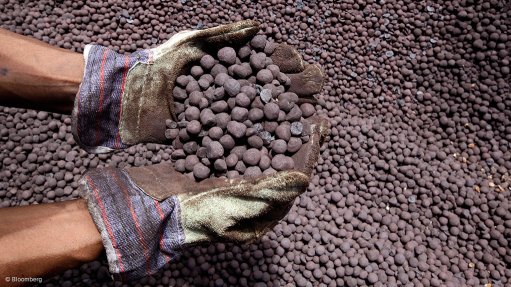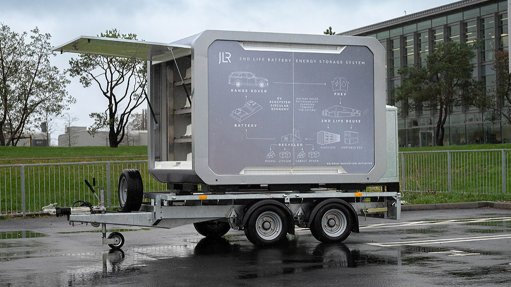Monitoring export barriers
It has been 81 years since World War Two started – on September 1, 1939 – and, as you read this piece, just more than a week since the Department of Trade, Industry and Competition (DTIC) launched the Export Barriers Monitoring Mechanism (EBMM).
The intention of the EBMM is to help South African exporters overcome export challenges by reporting export barriers and receiving assistance in resolving the barriers. It is understood that exporters reporting to the EBMM will receive dedicated government support, with a comprehensive resolution strategy developed for each individual barrier. While the EBMM is open to receiving concerns about barriers encountered in all markets, it will have a particular focus on smoothing trade with the rest of Africa.
According to the DTIC, the African Continental Free Trade Agreement offers unprecedented opportunities on the continent, and creating a conducive environment for the movement of goods is key to unlocking the potential of the agreement. The EBMM is said to be part of a comprehensive DTIC programme to address the nontariff barriers (NTBs) that stifle regional trade.
DTIC deputy director-general for export development, promotion and outward investments Lerato Mataboge says that, by creating a systematic approach to monitoring these barriers, government can develop a long-term agenda to target the most important export barriers. She adds that, by addressing each individual barrier, government can begin to manage each problem with the level of nuance and detail required for these complex challenges. She states: “During an initial pilot project, 28 key export barriers were processed by the EBMM and, during the initial phase of the national lockdown, the EBMM methodology was used to process 76 barriers related to Covid-19.”
In 2018, South African exporters faced 154 571 unique customs requirements worldwide and, over the past ten years, 23 795 new or amended technical barriers to trade were registered, while 13 364 sanitary and phytosanitary barriers were registered with the World Trade Organisation (WTO) or amended.
It has not been stated how the DTIC intends to resolve these export barriers, given that the WTO serves as the multilateral organisation that resolves such matters. Indeed, there are many international organisations that are dedicated to tackling NTB-related issues.
One of them is the United Nations Conference on Trade and Development, whose Trade Analysis Information System (TRAINS), which is a comprehensive computerised information system of the Harmonised System- (HS-) based tariff line level (HS 6-digit) database, provides data on trade control measures, including NTBs, para-tariffs and tariffs. TRAINS statistics are reported by 150 countries, which, depending on the country, are available from 1988 onwards.
Even the WTO offers ‘I-TIP Goods’, its integrated analysis and retrieval of notified nontariff measures. It provides comprehensive information on the NTBs applied by WTO member countries in merchandise trade. The information includes members’ notifications of NTBs and information on ‘specific trade concerns’ raised by members at WTO committee meetings. It aims to serve the needs of those seeking detailed information on trade policy measures as well as summary information. It includes links to the WTO’s extensive tariff and trade databases, and to DocsOnLine system. I-TIP is accessible at https://i-tip.wto.org/goods/Default.aspx.
Further, on its website, Trade and Tariff Data, the WTO provides quantitative information relating to economic and trade policy. The WTO’s databases and publications provide access to data on trade flows, tariffs, NTBs and trade in value-added goods.
Exactly what the DTIC expects to achieve is not evident, since barriers to trade are well documented and known. It is also not evident how the DTIC expects to effect change.
Comments
Press Office
Announcements
What's On
Subscribe to improve your user experience...
Option 1 (equivalent of R125 a month):
Receive a weekly copy of Creamer Media's Engineering News & Mining Weekly magazine
(print copy for those in South Africa and e-magazine for those outside of South Africa)
Receive daily email newsletters
Access to full search results
Access archive of magazine back copies
Access to Projects in Progress
Access to ONE Research Report of your choice in PDF format
Option 2 (equivalent of R375 a month):
All benefits from Option 1
PLUS
Access to Creamer Media's Research Channel Africa for ALL Research Reports, in PDF format, on various industrial and mining sectors
including Electricity; Water; Energy Transition; Hydrogen; Roads, Rail and Ports; Coal; Gold; Platinum; Battery Metals; etc.
Already a subscriber?
Forgotten your password?
Receive weekly copy of Creamer Media's Engineering News & Mining Weekly magazine (print copy for those in South Africa and e-magazine for those outside of South Africa)
➕
Recieve daily email newsletters
➕
Access to full search results
➕
Access archive of magazine back copies
➕
Access to Projects in Progress
➕
Access to ONE Research Report of your choice in PDF format
RESEARCH CHANNEL AFRICA
R4500 (equivalent of R375 a month)
SUBSCRIBEAll benefits from Option 1
➕
Access to Creamer Media's Research Channel Africa for ALL Research Reports on various industrial and mining sectors, in PDF format, including on:
Electricity
➕
Water
➕
Energy Transition
➕
Hydrogen
➕
Roads, Rail and Ports
➕
Coal
➕
Gold
➕
Platinum
➕
Battery Metals
➕
etc.
Receive all benefits from Option 1 or Option 2 delivered to numerous people at your company
➕
Multiple User names and Passwords for simultaneous log-ins
➕
Intranet integration access to all in your organisation


















